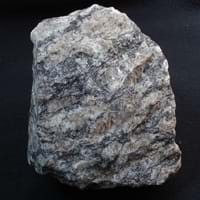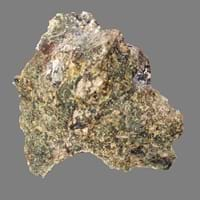Definition
Gneiss is a common and widely distributed type of rock formed by high-grade regional metamorphic processes from pre-existing formations that were originally either igneous or sedimentary rocks
Harzburgite is a plutonic rock of the peridotite group consisting largely of orthopyroxene and olivine
Discoverer
Unknown
Unknown
Etymology
From the Middle High German verb gneist (to spark; so called because the rock glitters)
From the name of a town in Harzburg, Germany
Class
Metamorphic Rocks
Igneous Rocks
Sub-Class
Durable Rock, Hard Rock
Durable Rock, Medium Hardness Rock
Group
Not Applicable
Plutonic
Other Categories
Coarse Grained Rock, Medium Grained Rock, Opaque Rock
Coarse Grained Rock, Opaque Rock
Texture
Banded, Foliated, Platy
Phaneritic
Color
Black, Brown, Pink, Red, White
Dark Greenish - Grey
Durability
Durable
Durable
Scratch Resistant
Yes
Yes
Appearance
Foliated
Rough and Shiny
Interior Uses
Countertops, Decorative Aggregates, Flooring, Interior Decoration
Decorative Aggregates, Homes, Interior Decoration
Exterior Uses
As Building Stone, As Facing Stone, Garden Decoration, Paving Stone
As Building Stone, As Facing Stone, Garden Decoration, Office Buildings, Paving Stone
Other Architectural Uses
Curbing
Curbing
Construction Industry
As Dimension Stone
As Dimension Stone, Cobblestones
Medical Industry
Not Yet Used
Not Yet Used
Antiquity Uses
Artifacts
Artifacts, Monuments, Sculpture, Small Figurines
Commercial Uses
Cemetery Markers, Jewelry, Tombstones, Used in aquariums
Creating Artwork, Gemstone, Jewelry, Source of Chromite, Platinum, Nickel and Garnet, Source of Diamonds
Types
Augen Gneiss, Henderson Gneiss, Lewisian Gneiss, Archean and Proterozoic Gneiss.
Not Available
Features
Generally rough to touch, Is one of the oldest rock
Constitutes upper part of the Earth's mantle, Generally rough to touch, Is one of the oldest rock
Archaeological Significance
Famous Monuments
Konark Sun Temple in India, Washington Monument, US
Data Not Available
Sculpture
Not Yet Used
Used
Famous Sculptures
Not Applicable
Data Not Available
Pictographs
Not Used
Used
Petroglyphs
Not Used
Used
Figurines
Not Yet Used
Used
Formation
Gneiss is a high grade metamorphic rock i.e. it has been subjected to higher temperatures and pressures than schist. It is formed by the metamorphosis of Gneiss forms from volcanic rock, shale or granitie.
Harzburgite is a fine-grained, hard rock which is a type of metasomatite, essentially altered basalt. It forms with or without crystallization, either below the surface as intrusive rocks or on the surface as extrusive rocks.
Mineral Content
Biotite, Chlorite, Feldspar, Garnet, Graphite, Hornblade, Micas, Muscovite or Illite, Quartz, Quartzite, Silica, Zircon
Amphibole, Chromite, Garnet, Magnesium, Olivine, Phlogopite, Plagioclase, Pyroxene
Compound Content
Aluminium Oxide, NaCl, CaO, Iron(III) Oxide, FeO, Potassium Oxide, Magnesium Carbonate, MgO, MnO, Phosphorus Pentoxide, Silicon Dioxide, Titanium Dioxide
Ca, Fe, Mg, Potassium, Silicon Dioxide, Sodium, Titanium Dioxide
Types of Metamorphism
Impact Metamorphism
Impact Metamorphism
Types of Weathering
Biological Weathering, Mechanical Weathering
Chemical Weathering, Mechanical Weathering
Types of Erosion
Chemical Erosion, Coastal Erosion, Sea Erosion
Chemical Erosion, Sea Erosion
Grain Size
Medium to Coarse Grained
Coarse Grained
Fracture
Irregular
Irregular
Porosity
Very Less Porous
Less Porous
Compressive Strength
Not Available
Specific Gravity
2.5-2.7
3-3.01
Transparency
Translucent to Opaque
Translucent to Opaque
Density
2.6-2.9 g/cm3
3.1-3.4 g/cm3
Specific Heat Capacity
Not Available
Resistance
Heat Resistant, Pressure Resistant, Scratch Resistant, Wear Resistant
Heat Resistant, Pressure Resistant, Wear Resistant
Deposits in Eastern Continents
Asia
China, India, Iran, Iraq, Kazakhstan, Kyrgyzstan, Mongolia, Russia
Japan, Oman
Africa
Cameroon, Ethiopia, Ghana, Kenya, Madagascar, Morocco, Mozambique, Namibia, Nigeria, Tanzania, Togo
South Africa
Europe
Albania, Austria, Bosnia and Herzegovina, Finland, France, Georgia, Germany, Hungary, Italy, Kosovo, Monaco, Norway, Poland, Romania, Serbia, Slovakia, Slovenia, Switzerland, Ukraine, United Kingdom
France, Germany, Italy, Venezuela
Others
Not Yet Found
Hawaii Islands, Mid-Atlantic Ridge
Deposits in Western Continents
North America
Canada, Costa Rica, Cuba, Mexico, Panama, USA
Canada, USA
South America
Argentina, Bolivia, Brazil, Chile, Colombia, Ecuador, Peru, Venezuela
Not Yet Found
Deposits in Oceania Continent
Australia
New South Wales, New Zealand, Queensland, Victoria
Not Yet Found










